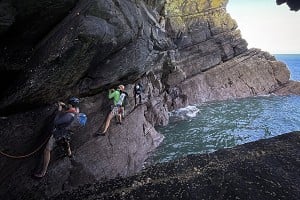
It has been a record-breaking season for helicopter rescues in Pakistan, with four recent high profile rescues making headlines in both climbing and mainstream media - three of which broke records for flight duration, landing altitude and fixed-line recovery height. An unprecedented 38% of expeditions in Pakistan called for evacuation this season. Unlike in Nepal, where private operators conduct helicopter rescue missions, the Pakistan Army is the sole provider of rescues in their country, which brings complications in an ongoing war zone.
Despite the recent demonstrations of bravery and skill by the Pakistani pilots, there unfortunately remain misconceptions regarding their operations and efficiency due to long-held prejudices and misreporting in the media.
I got in touch with some experts on the situation to find out the ground truth - so to speak - and put these recent rescues into perspective.
Paris-based Pakistani climber Shamyl Sharafat Ali volunteered to supply real-time updates to French press in an attempt to centralise the news flow following the media scandal that erupted after Elisabeth Revol's high profile rescue on Nanga Parbat in January. In June, he gave real-time updates to journalists regarding the rescue of British climbers Bruce Normand and Tim Miller from Ultar Sar. A few weeks later, he was supplying information to the media - including UKC - about the situation on Latok I, as Russian climber Alexander Gukov awaited rescue following the death of his climbing partner Sergei Glazunov. With close connections to the major mountaineering actors in Pakistan (Askari Aviation, Pakistan Army, Alpine Club of Pakistan and local tour operators), Shamyl's input is extremely valuable in outlining the facts and relaying reliable information.
Scottish mountaineer Bruce Normand has first-hand experience of helicopter rescue. He and Tim Miller spent two days at 5900m in June when an avalanche hit their tent on Ultar Sar near Hunza in northeast Pakistan, which killed their Austrian team member Christian Huber. The 5th Pakistan Army Aviation Squadron carried out a rescue and recovery mission. Thomas Drew, the British High Commissioner to Pakistan, praised the "remarkable and dangerous rescue."
A remarkable and dangerous rescue. Our gratitude to the Pakistan Army pilots who rescued two British climbers trapped by an avalanche on Ultar Sar Peak near Hunza. Our thoughts with their Austrian fellow climber who did not survive the avalanche. pic.twitter.com/WKfvkb0KcA
— Thomas Drew (@TomDrewUK) July 1, 2018
Major Rescues in Pakistan - 2018
- January - Elisabeth Revol and Tomasz Mackiewicz reached the summit of Nanga Parbat 8126m in Pakistan. Tomasz became ill after summitting and eventually unresponsive. Elisabeth descended alone, while a rescue team comprising elite mountaineers Adam Bielecki, Denis Urubko, Jaroslaw Botor and Piotr Tomala were dropped below Nanga Parbat Base Camp at 4900m. Adam and Denis climbed to Camp 2 at 6100m, meeting Elizabeth and ensuring her safe descent to Camp I, where she was taken by helicopter to the hospital in Islamabad. This was the longest rescue ever flown, in the sense that it was the first time rescuers had ever been taken from the Baltoro Glacier to Skardu, to Nanga Parbat and then back to the glacier.
- June - An avalanche on Ultar Sar triggered by a storm hit the tent of Christian Huber, Tim Miller and Bruce Normand, killing Huber. This rescue was one of the highest ever helicopter landings and certainly the highest ever in Pakistan, at 5900m; to some extent this was only possible because Miller and Normand were uninjured and could make a suitable landing pad in the snow.
- July - Russian mountaineer Alexander Gukov was rescued following a dramatic ordeal on the North Ridge of Latok I (7145m). Gukov's climbing partner Sergey Glazunov fell to his death while abseiling above 6000m on 25th July, leaving Gukov stranded in harsh weather conditions. Poor weather continuously hampered multiple rescue efforts on the mountain, but after 6 days without food or water and no battery remaining in his InReach, Gukov was rescued by pilots of 5th Pakistani Army Aviation High Altitude Squadron. This is possibly the highest fixed-line rescue ever, certainly in Pakistan.
- July - Not a helicopter rescue, but a remarkable one nonetheless on Broad Peak with the aid of a quadcopter. Scottish mountaineer Rick Allen was spotted by a drone flown by Polish climber Bartek Bargiel above 7000m after he went missing from the group during the descent from a summit bid. Allen was safely escorted to Base Camp and later evacuated by Askari Aviation due to his condition.
- August - French alpinist Mathieu Maynadier was injured by rockfall in the Tagas Valley: it would have required the steepest helicopter rescue ever, involving long-lining, which was ruled out by equipment and altitude. Expedition members Nico Favresse and Carlos Molina lowered Maynadier off the wall to reach a pick-up spot on a glacier.
While the mountains in this region might be a playground for mountaineers, the Baltoro Glacier remains a war zone; a restricted area within range of Indian guns. Helicopters are present to protect Pakistani air space and to support their ground troops by dropping supplies and evacuating the sick and injured soldiers.
'They are not there for foreign climbers and they are not a rescue service.' explains Normand. 'However, when somebody needs a helicopter, they are the only people who can help, so the army, specifically the 5th Squadron, which is the mountain helicopter troop, will carry out the rescue.'
The interface for rescues is a commercial company called Askari Aviation, whose staff are all retired military personnel. Once contact is made and an expedition's plans shared, a security deposit of $15000 (reduced to USD 12,000 from the 1st of July) must be paid and upon a rescue call they will fly as soon as is feasible depending on weather and terrain. 'In principle they have other duties, like evacuating injured Pakistani soldiers,' says Normand, 'but usually they give foreigners priority.' This shared resource between local soldiers and foreign mountaineers raises ethical questions, and has caused problems in the past.
Helicopter rescue in Pakistan is not subsidised. Unlike in parts of the European Alps where rescue is free (excluding treatment or airlift due to injury) such as across the Mont Blanc Massif - the bill footed by the national government and/or the local commune - Askari is not a state-sponsored rescue agency. Sufficient insurance cover is therefore a must for any Himalayan or Karakoram expedition team.
The cost ranges from $12-14k for a one-time mission to the upper Baltoro. '$3023 per hour for one Écureuil helicopter is not at all unreasonable by international standards,' says Normand. An additional expense might occur, however, if a rescue involves flying an Écureuil B3 over a glacier. The Pakistan Army meticulously follows a self-imposed safety protocol, which states that a backup helicopter is necessary in case a turbine should fail above glaciated terrain. 'Since B3s are single-turbine helis, the heli has to crash-land if it fails,' Sharafat Ali explains. 'Due to the high altitude and low temperatures, the Army dictates that a single-turbine heli should not fly alone over glaciers.' The Baltoro Glacier is 63km long, so it's not hard to imagine the logistical issues if a single helicopter were to crash-land. This "two ship policy" applies exclusively to glaciers - even if just one mile of the route is glaciated, since diversions are frequently made due to poor visibility. If a glacier is involved in the route, the two ship policy is enforced. If not, one helicopter will suffice. Where two ship policy is applied, the price doubles accordingly.
If a rescue requires more flights, they will happen: Normand has noticed that Askari has a culture of completing the mission, having experienced it first-hand twice. 'However, they have been shafted repeatedly by insurance caps and false promises,' he adds, 'and if this situation gets worse one could hardly be surprised if they review their operations.'
In contrast, Nepalese private helicopter operators can set their own guidelines, which has caused problems of a different kind. Some tour operators in the country have financial ties to helicopter companies, creating a conflict of interests. A recent government-led investigation exposed fraudulent helicopter rescues arranged by brokers occurring in Nepal - as well as over-treatment in some hospitals - costing insurance companies millions of dollars annually. 'All bills are $29900 because the limit on most trekkers' insurance is $30k,' adds Normand. Up to 30 percent of helicopter rescues that happen in Nepal are completely unnecessary, investigators established. International insurance companies have warned the government that they will stop issuing travel insurance policies for tourists visiting Nepal from 1st September if it does not attempt to put a stop to the fraudulent activities. Since Pakistan contributes 0.8% of the insurance payouts in this general class, rising numbers of rescues here are generally not an issue for insurers.
It's crucial for climbers to understand the situation fully prior to an expedition, Normand explains. 'It's a climber's duty to know the rules. Like getting a visa before you arrive, you should not expect or assume that you can be an exception to rules you didn't bother to check.' Regarding helicopter rescue - and at risk of stating the obvious, perhaps - Pakistan is not France, he warns. 'France is not currently at war with Italy, and in fact no other country in Europe will just absorb your helicopter cost like they do.' Indeed, it's worth bearing in mind that you have no fundamental right to a rescue globally. 'In China they simply do not happen and nobody thinks they can yell at the government or military there to get one,' Normand explains. 'Generations of Polish climbers in Pakistan knew the rules; they knew they could never post $15k (or by extension pay afterwards), got themselves down and toughed it out on the hike out. In 2015, when Scott Adamson broke his ankle on the North Face of the Ogre II, we hadn't posted the money (same reason) and so we didn't ask: Scott gritted his teeth, sat on a mule and hopped at the river-crossings.'
Aside from ongoing tensions between Pakistan and India concerning Kashmir, politics plays little role in the rescue missions. However, diplomacy and bureaucracy can influence decisions. With improved communications, embassies can now get involved much more easily to make demands and promises, Normand explains, 'which for diplomatic reasons the Pakistanis take very seriously,' he says. Bureaucratically, there are rules to follow with Askari and Standard Operating Procedures to follow when flying, which will only increase, Normand believes. 'In the past, the number of flights for foreigners has been relatively low and there has been a lot of latitude in following these rules, but the changing numbers are going to affect this.'
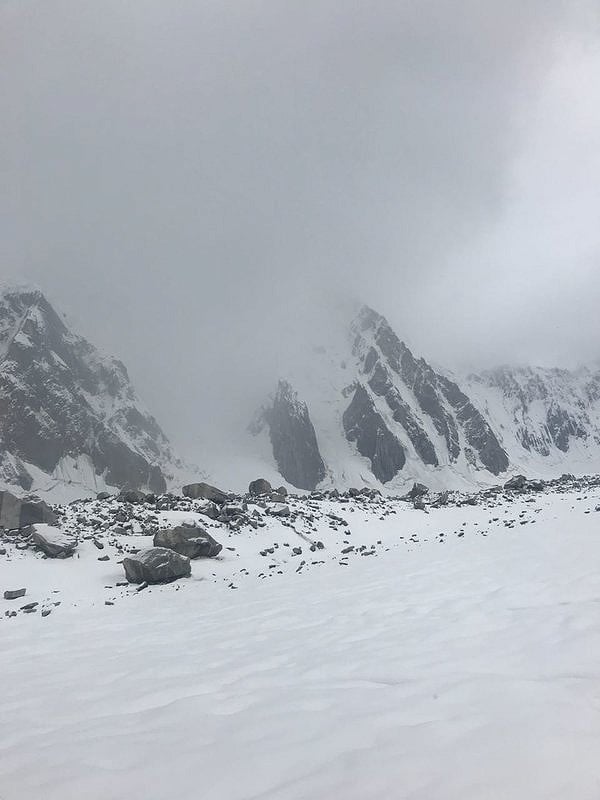
Unfortunately, the reputation of the Pakistan Army's 5th Squadron has often been tarnished, largely due to misinformation and ignorance regarding appropriate flying conditions. 'For people in the know about altitudes, weather, etc., they were perceived as competent,' Normand says. However, for those unaware of the finer details of helicopter rescue, their uninformed comments often reach the media unquestioned, he explains.
'Elisabeth Revol was ignorant of some of the facts: she claimed helicopters could rescue people at 7200m (the limit is 1000m lower, and much lower still if a landing is needed, as it certainly would have been for Mackiewicz); she complained about delays and unwillingness when i) she hadn't posted her rescue bond, ii) it was January, so it was a long wait for suitable flying weather, and iii) they had to fly to the end of the Baltoro, then back to Skardu and then on to Nanga Parbat,' Normand recalls. 'Revol also made totally unfounded statements about "the Pakistanis delaying and negotiating for more money for the rescue" when nothing like this was going on - Askari bills you by the hour flown, and those hours were going up - far beyond any insurance limits, but they certainly didn't stop half-way and ask for more cash.'
The French media, including broadsheets, repeated these comments uncritically without fact-checking, 'even though Revol was clearly under huge physical and psychological pressure during her ordeal, saying herself that she was hallucinating,' Normand adds. This was when Sharafat Ali stepped in. 'Following the media scandal that occurred after the Revol affair on Nanga Parbat, I decided to centralise the news flow for the French journalists,' he explains.
The entire bill for Revol's rescue was eventually paid through a crowdfunding appeal - a fundraising method which has raised an ethics debate surrounding their time-wasting and 'popularity contest' tendencies, as described by Andrew Bisharat in his blog Evening Sends. 'The more crucial point to acknowledge, however,' he writes, 'is the fact that in 2018 it's virtually impossible to be "alone" and "self-reliant" in the wilderness as we once understood these terms and their relevance to both climbing ethics and the age-old question of mountain rescue.' GPS trackers and sat phones now make true solitude and self-sufficiency nigh on impossible as connections to the outside world grow stronger.
Little has changed on the ground in the mountains of Pakistan for 30 years. The helicopters have improved, and Askari Aviation was set up in 1995, but the numbers of troops, and of climbers, are similar. Trekker numbers are higher today due to an influx of Chinese and Pakistani groups. 'What has changed dramatically is communications, and also expectations,' Normand says. 'Nowadays anyone can call anyone anywhere, so everyone expects instant solutions and everyone can get involved – not only climbers (who might know what they got into) but also distraught relatives (who don't) and embassy personnel (who rarely do).'
The Pakistan military has never yet crashed a helicopter during a rescue/evacuation involving a foreigner, trekker or climber, Normand explains. There have been numerous service accidents when evacuating soldiers, but an important distinction must be made here in recognising that injured soldiers' injuries are typically more time-critical, resulting in more frequent bad-weather flying.
One of the most notable rescues by the Pakistan Army involved late Slovenian alpinist Tomaž Humar. During a solo attempt to climb Nanga Parbat in 2005, he became trapped by avalanches and melting snow at an altitude of nearly 6500 metres. After six days in a snow cave he was rescued by a Pakistan Army helicopter crew on August 10, 2005. 'Although everyone talks about this, in fact the crew dropped him some gear at 6500m so he could climb down, and then he was lifted off from about 5600m,' Normand clarifies.
Bruce Normand's Account of Rescue from Ultar Sar
I'd prefer to call it a recovery, because Tim and I were OK and could have climbed down 1-2 nights later once the snow was stable. However, I won't deny that it was convenient (we did both have frost-nipped hands, especially Tim) and it was essential for evacuating Christian's body, which is always important for the relatives. The whole thing went very quickly, because my American friends had experience from and were all thinking of the loss of Scott Adamson and Kyle Dempster in 2016. We'd posted the bond and our weatherman, Jed, had all the location (InReach), terrain and route info. In fact, Askari was ready to fly by noon on Sat 30th, 8 hours after we'd raised the alarm, and we had to tell them not to come because the weather was still bad (light snow and zero visibility). An Askari employee told us afterwards "When I heard that I knew this one was going to be OK" – usually people just scream at them to come immediately, even when it's a total white-out. It cleared that evening so we stamped out a huge circle in the only flat spot we had.
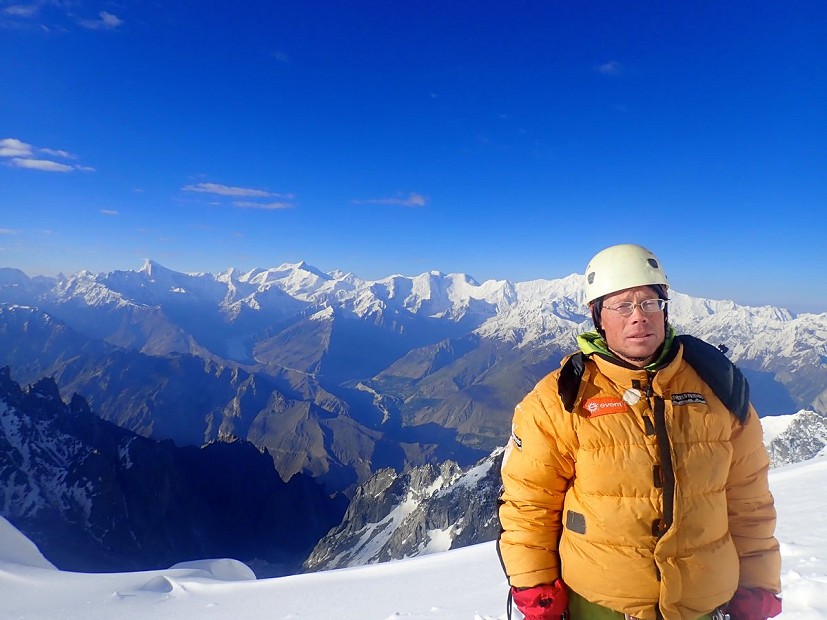
Everything else is in the video: they came in very carefully (they said the ridge location and the rock wall behind were bad terrain) then set down. They took Christian's body and told us to leave. It lifted up, then set down. We were horrified, but the pilot waved me over and in – he'd been testing and realised he could handle one more person. We went up and dived off the ridge, but then looped around and overflew the landing pad as they lifted Tim off. We pointed out the avalanche spot, of which there was very little to see. Then we flew to Gilgit to drop off the body before they flew back to base in Skardu. When we got back to Islamabad a week later, we went over to the Askari office in Rawalpindi to thank them. We asked if they trusted our insurance to pay what had been promised, and they rightly said "no." I paid the difference ($16929 – 15000) and 5 weeks later I'm still waiting for parts of it.
Alexander Gukov's Rescue
'The Russians tend to apply intense diplomatic pressure on behalf of their citizens, and the current situations in and between the two countries meant there was a lot of motivation on both sides for a good outcome,' Normand explains. 'Askari soaked up all the orders from clueless people on high and left the pilots to get on with it. However, this did lead to a lot of flying around in the clouds for days until the weather cleared.' When conditions finally allowed a rescue, the crew were walking a fine line: fixed-line rescues are not standard procedure at all, since without a trained rescuer on the end of the line the team are relying on the climber to do everything correctly. He didn't.
In his fragile state, Gukov forgot to unclip himself and for 10 seconds the helicopter was being controlled by the rope, which caused the tail rotor to swing dangerously close to the face. Fortunately, Gukov's anchor blew and he was catapulted off and out. 'The bill for this rescue is just over $50000 for actual flying time, and they didn't include the days the helicopters were out of Skardu or a fuel dump (by a big helicopter) in Jhola camp,' Normand outlines. 'Gukov was insured for $20000, and having given all the demands and orders, the Russian embassy just said "talk to the insurance."' The good news was that the Russian climbing community mobilised and raised some money very quickly by crowdfunding. 'The bad news is that Russia is under financial embargoes and this money has to go through a lot of light fingers before it gets to Askari, so it's not clear if the bill will ever be paid,' says Normand. In his years of climbing in the country, Normand has often perceived a sinister attitude towards the Pakistanis. 'I have to say many people's attitudes - the Russians are far from the only ones who have blown Askari off - reek of nothing but racism. If the French or Americans had hauled them off and then sent the bill, it would be a different story.'
The Future
Pilot training hasn't changed significantly over the years since Askari was established. The Pakistan Army practise fixed-line procedures with cargo and all pilots do a 3-year rotation in the 5th Squadron. 'Initially they have no clue what it's like to fly in the mountains and essentially have to learn to fly from scratch again,' says Normand. 'By their second year they are starting to get some confidence and can consider going beyond SOP in terms of altitude or flying in clouds. In their third year they can pull off some big flying achievements, but then they leave, as Skardu is not the most attractive base for military personnel.' This means the area is unlikely to ever have a permanent rescue cadre and the technical ability fluctuates depending on pilots' skill. 'The current crop are very good, plus they have had a lot of mileage this season starting with Revol, so this is why they were able to pull off this year's rescues,' he explains.
Despite this season of miraculous and high-profile rescues, Normand and Sharafat Ali are concerned that expectations for the future are being raised to unrealistic levels.
'This is a huge concern. The ease of communications and access for clueless people is becoming problematic,' says Normand. 'You could say that this year's rescues will make no difference as long as there are people who believe they can be rescued from 8000m, but certainly a larger fraction of the semi-informed climbing public gets to see some new upper limits.' Even the most seasoned mountaineer may not appreciate some basic parametres of flying: the crew can't fly if they can't see (clouds); they can't land without a large, firm pad; they can't long-line without a winch and they can't change the weight of the helicopter by as much as 100kg if flying above 6300m, because the air is too thin. These criteria combine to reduce the likelihood of a safe operation.
'It's only a matter of time until some pilots are killed. People need to get informed.' - Bruce Normand
One might expect that these recent successful rescues would enable more funding in Pakistan for training and equipment, but unfortunately the opposite will likely be true. 'If anything, the budget will be cut because too much money is being lost,' Normand explains.
The stats from this season in Pakistan are sobering. 'Of 44 expeditions, 17 called a helicopter. Some expeditions had multiple evacuations and called for rescue more than once,' Sharafat Ali outlines. 'Someone is bound to sit up and take notice later in the year when the Army has run the expected 30 rescue missions - some at the expense of critical operations of the Pakistan Army.' Six rescues were the accidents already mentioned, plus one set of Koreans on Latok. All of the others were on the Baltoro. 'For at least eight of the call-outs, the pilots could tell - or were told - that there was nothing wrong with the climber other than their being too lazy to walk out,' says Normand. The fact that over a third of these 2018 expedition teams called for helicopters - many simply "because they're there" - is a new development that will undoubtedly place pressure on Askari's operations.
This winter, the situation looks set to become more complicated. Askari experiences many more soldier evacuations in colder periods than in summer due to frostbite and the effects of altitude. The number of flyable days is considerably reduced and the wind is almost always relentless. 'There are expeditions scheduled for this winter to K2, Nanga Parbat, G2 and maybe Broad Peak,' says Normand. 'These climbers have to be aware of the long waits if they ask for a helicopter and understand that a frostbitten Pakistani soldier is likely ahead of them on the list.'
Another topic worthy of discussion is "long-lining." 'Everyone expects that this is what a "real" helicopter rescue is, because the French do them to save money due to their speed, and then people think the Pakistanis are incompetent if they can't long-line,' Normand explains. Long-lining requires a winch, which weighs 200kg. A rescue technician descends, and usually a winch-man stays on the aircraft, which is a further 200kg, certainly with a steel cable (50+ kg). 'Add 450kg to the helicopter and … its ceiling goes down from 6300 to about 5000m,' he adds. 'This is why the Pakistanis don't have winches – they need to get much higher than that.' A "fixed-line" rescue, like Gukov received, involves rescue by rope.
However, a cargo rope is static, risking a broken back in the case of a weight transfer problem. 'I guess they have some slightly dynamic ropes for emergencies, but the bigger problem is the one they ran into with Gukov – the injured climber has to be able to do everything himself, and do it correctly,' Normand explains. 'After Gukov, we cannot expect fixed-lining to be optional SOP, and I don't know about landings on climber-prepared pads either. Some helicopters have been lost due to sinking in the snow on landing during regular military operations, so this was a big point in our rescue. I don't know if they had to trust us blindly, as with Gukov, or if they actually had some margin to test the pad as they came in.'
Once the rescue is completed, the task of ensuring the processing of bills and insurance payouts remains. Late this season, a system of rescue security deposits - the PATO (Pakistan Association of Tour Operators) "Pool Plan" - was put in place. The association collected around $5000 from individual tour operators and paid it as a security deposit to Askari Aviation. As a result, any climber going through a member of this association will not need to pay a bond to Askari Aviation directly. 'Mathieu Maynadier's tour operator was part of this association and the rescue was put in place very rapidly,' Sharafat Ali says. However, due to insurance issues, this system might not be implemented next year as the association might lose money doing it. 'Some insurance claims are not being paid in full, so this is only a temporary solution for this year and might not exist in 2019,' he adds.
The tour operator receives its money back at the end of the season (mid-September). The client pays nothing to either PATO or Askari, unless they choose to pay the entire bond themselves and not involve PATO. As the rules stand currently, if a PATO member has two expeditions planned simultaneously, they must have one bond "on file." However, as soon as a rescue demand is received for one of the expeditions, they are required by PATO rules to put up another $5000 to ensure the safety of the other expedition.
'In Maynadier's case, Askari charged the PATO pool the exact amount of the rescue. Now the pool is awaiting to be paid by the insurance company,' Sharafat Ali explains. 'The insurance company can either pay Askari Aviation or PATO directly. In both cases, when reimbursed, the pool would recover its original bond money.'
Finally, but crucially, there's the question of helicopter rescue provision for high altitude expedition workers, who typically aren't covered under a climber's personal insurance. In Nepal, rescue is generally more readily available to workers following high profile discussions regarding their rights, but in Pakistan high altitude porters aren't as common. There are currently around 25 high altitude porters in Pakistan. 'In an emergency, local tour-operators provide porters to Askari Aviation to assist a climber in trouble, but they are often refused by embassies even if they are competent, which happened in the Revol rescue,' Sharafat Ali explains. Big expeditions are bringing Nepalese Sherpas to Pakistan, which isn't helping the situation either. Pakistan may be forced to put in place rules to limit the number of Nepalese Sherpas to prevent market domination. 'The best way to inculcate a certain skill in a community is to connect it with an economic benefit,' says Sharafat Ali. 'If there is demand for a certain skill set, people will try to learn it to make a living.'
A porter's rescue is dependent on the expedition which hires them. It is the group's responsibility to pay for helicopter rescue insurance for porters, alongside the compulsory medical insurance in case of injury or life insurance in case of death. 'Larger tour-operators are forcing their expeditions to provide rescue insurance for their high altitude porters, but not all of them are doing so,' Sharafat Ali adds. 'Participating operators ensure that expeditions sign a contract whereby the expedition would be responsible for their Pakistani staff.' Thankfully, the reason that porter rescue cover in Pakistan has received little attention so far is that it hasn't been necessary - Askari Aviation do not recall a request for a porter helicopter rescue over the last seven years. That said, equality between Western climbers and local workers should remain an important point of consideration for expedition teams.
2018 was an exceptional season. Looking ahead, climbers should not assume that they will get the same treatment as Normand, and certainly not that Gukov did. To even consider the option of a rescue, Normand insists that climbers need to fully understand the realities of high-altitude flying, the realities of the situation in Pakistan and the rules Askari sets, and then:
- Carry an InReach.
- Have a competent and knowledgeable team on duty at home.
'The bottom line is that we do want Askari to be there for us when things go badly wrong, so we have to i) make it possible for them to do their job and ii) make sure we're good for the money,' Normand sums up. 'We certainly can't complain about Pakistani incompetence if we cannot provide information or have unrealistic expectations, and we can't expect them to deal with climbers at all if they are left with the bill every time they put their own lives on the line for ours.'
- INTERVIEW: Albert Ok - The Speed Climbing Coach with a Global Athlete Team 17 Apr
- SKILLS: Top 10 Tips for Making the Move from Indoor to Outdoor Bouldering 24 Jan
- ARTICLE: International Mountain Day 2023 - Mountains & Climate Science at COP28 11 Dec, 2023
- ARTICLE: Did Downclimbing Apes help Evolve our Ultra-Mobile Human Arms? 5 Dec, 2023
- ARTICLE: Dàna - Scotland's Wild Places: Scottish Climbing on the BBC 10 Nov, 2023
- INTERVIEW: Loki's Mischief: Leo Houlding on his Return to Mount Asgard 23 Oct, 2023
- INTERVIEW: BMC CEO Paul Davies on GB Climbing 24 Aug, 2023
- ARTICLE: Paris 2024 Olympic Games: Sport Climbing Qualification and Scoring Explainer 26 Jul, 2023
- INTERVIEW: Malcolm Bass on Life after Stroke 8 Jun, 2023
- ARTICLE: Alexandr Zakolodniy - A Climbing Hero of Ukraine 26 Apr, 2023



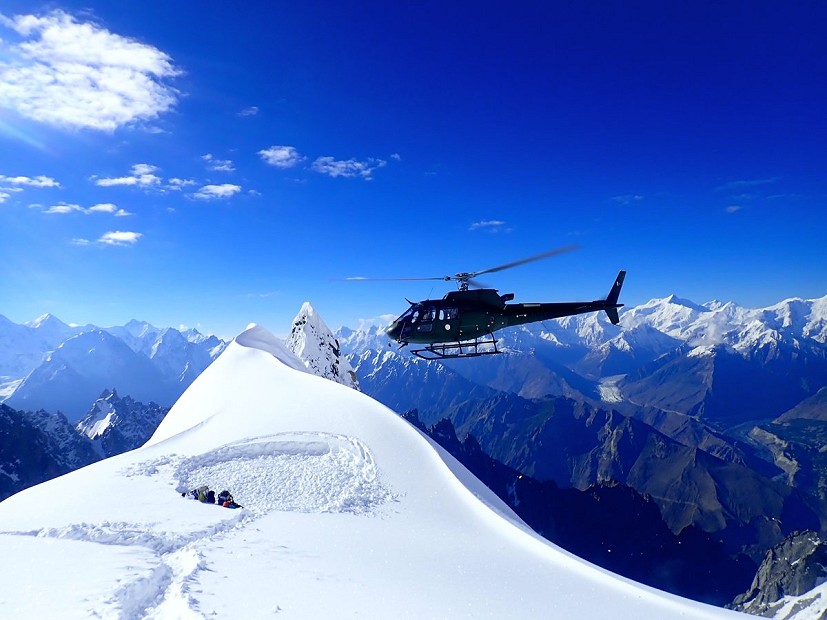
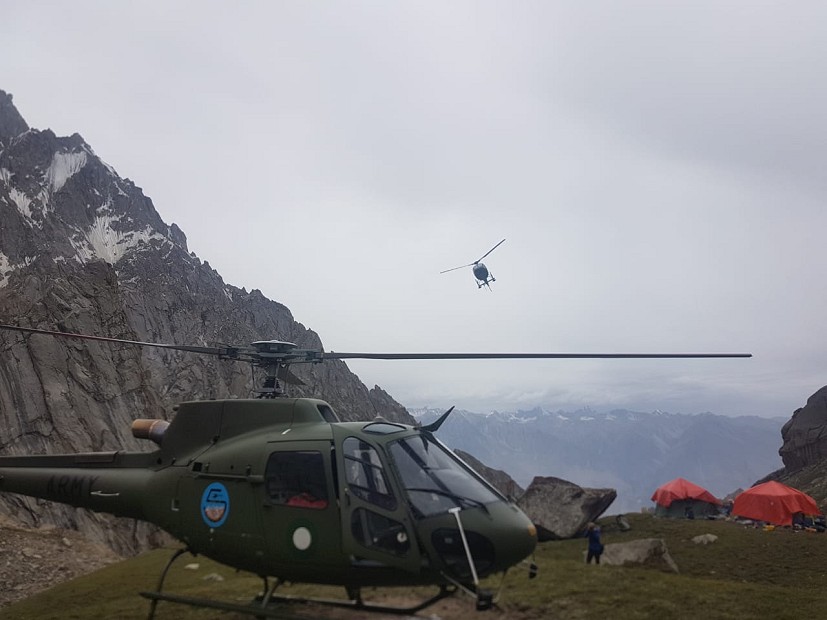
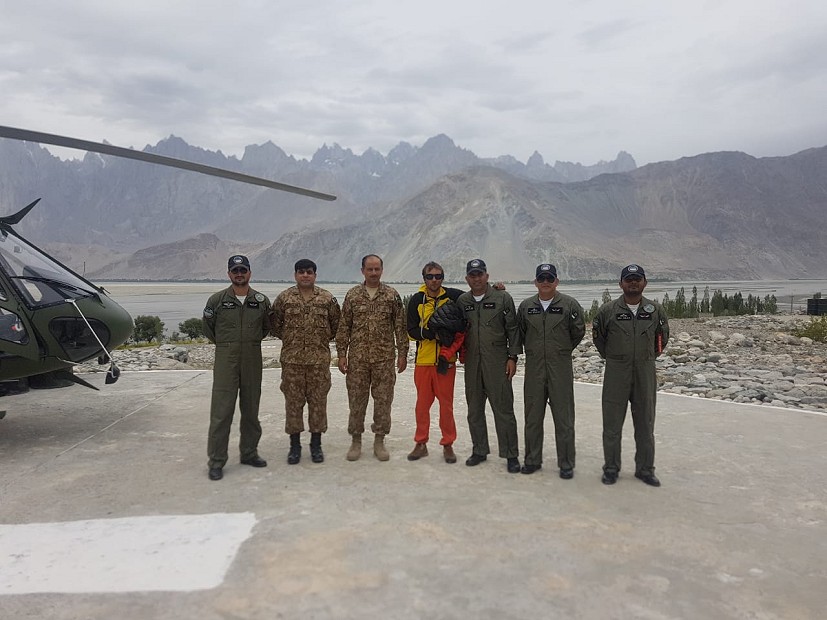
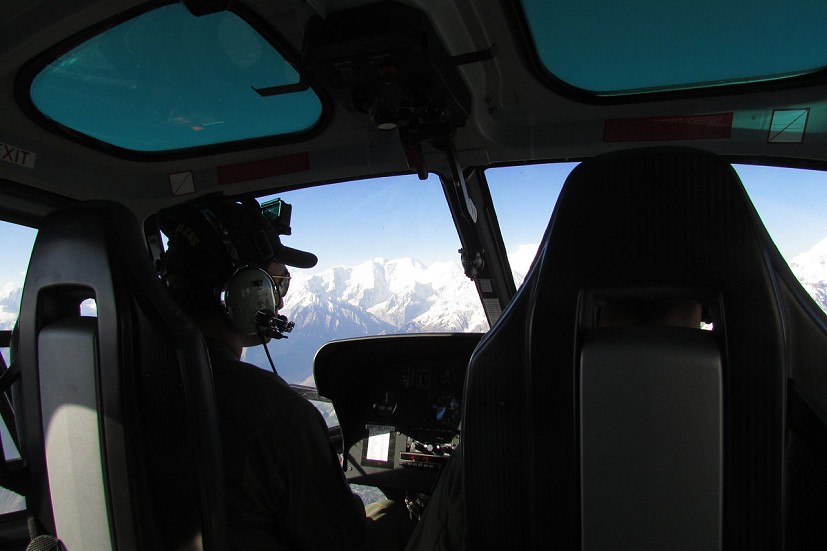
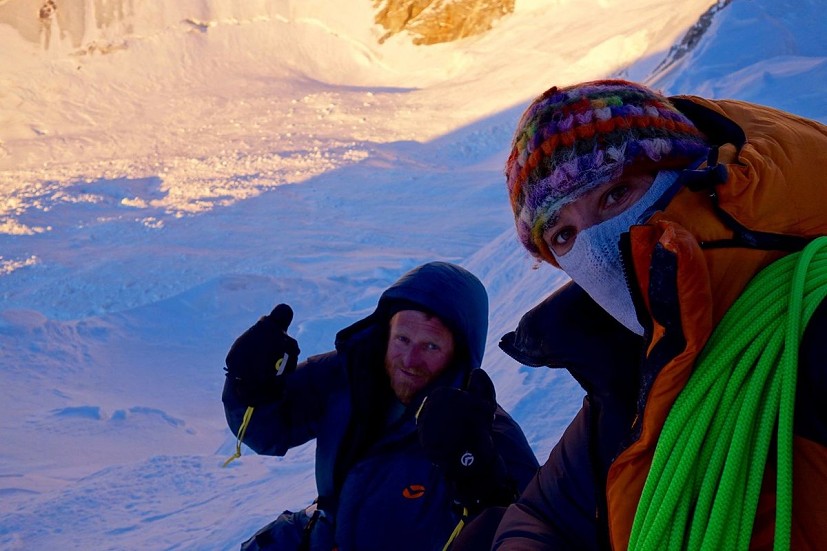
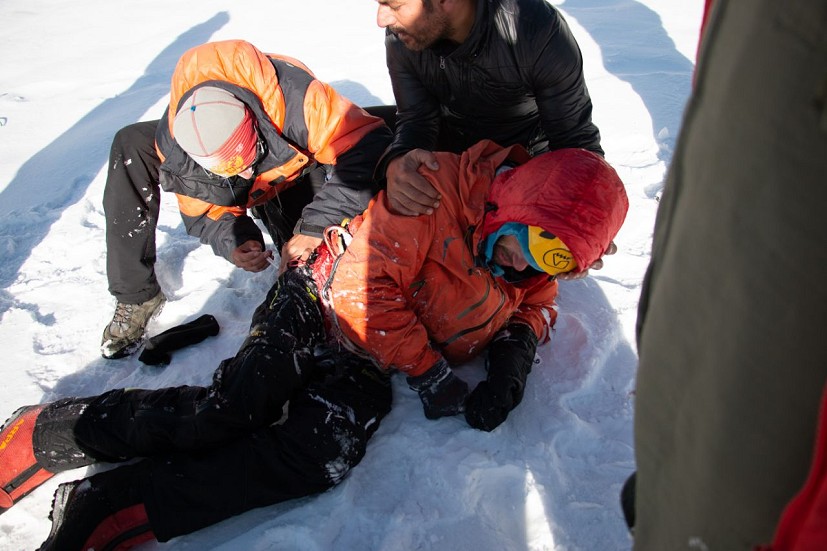
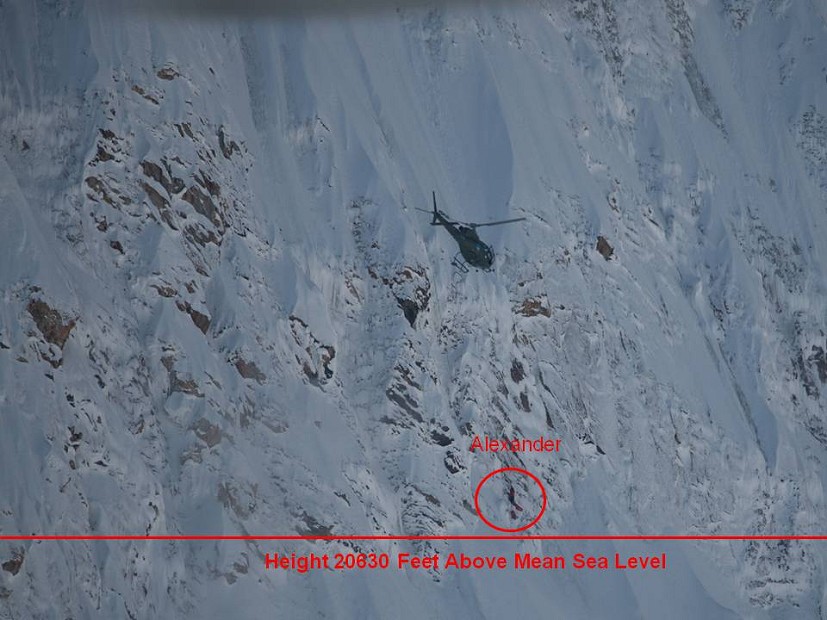

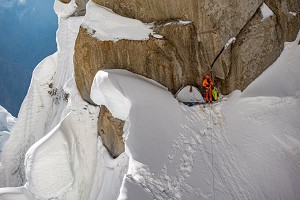
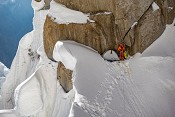
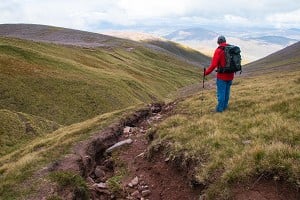
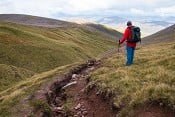




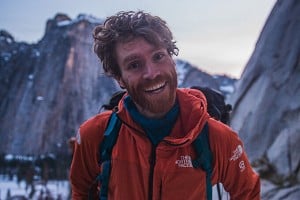
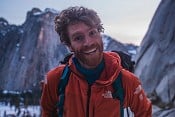


Comments
I found this very interesting , a great article thanks.
An excellent article on an interesting subject.
Full respect to Brice Normand for paying the difference.
Great article, and useful, thanks
(I do not want to detract from the feat mentioned in the article, but the rescue in June seems not "the highest helicopter landing in history" - that would be the one on Everest summit in June 2005: the pilot stayed there for nearly 4 minutes then lifted off again)
Great article, one of the best pieces of mountain journalism I've read in a while.
Excellent article, well done Natalie and UKC for going into this.
A few points:
1. "..This rescue was the highest ever helicopter landing, at 5900m" - I assume you meant to add "...in Pakistan"? As there have been countless landings now at C2 in Everest's Western Cwm above 6000m.
2. "The entire bill for Revol's rescue was eventually paid through a crowdfunding appeal..." - I understood it that this appeal, launched by Masha Gordon, did raise a lot of money but the Polish government footed the bill for the rescue in the end and the crowdfunded money was divided up between Tomas' children.
3. It would have been good to cover the US company Global Rescue, to help climbers understand what they will and won't do.
4. "The ease of communications and access for clueless people is becoming problematic..." Loving the typically Bruce comments :-)
It's disgusting that 'climbers' - are so incompetent, lazy and selfish that they'd want a ride out of the Baltoro cos they don't want to walk out. This crap costs us all, as the article rightly implies, either in making insurance cost more, or harder to get, or making rescues more unlikely. This bullshit has arisen out of the execrable developments on Everest and in the corrupt Nepal scene, which itself is rightly being brought to heel, mainly due to Western insurance companies realising they were being ripped off. The climbing media needs to start calling out more of these dodgy practices that have become part of commercial 'climbing' in the Himalaya, and now Karakoram. The more we tolerate it, the worse it gets.